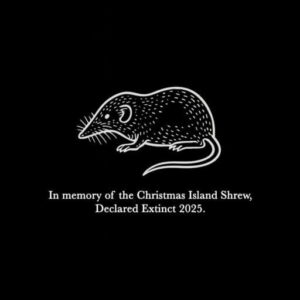Physical Address
304 North Cardinal St.
Dorchester Center, MA 02124
Physical Address
304 North Cardinal St.
Dorchester Center, MA 02124

Weighing no more than a spoonful of sugar, the Christmas Island shrew once filled the forests of this remote Indian Ocean island with its distinctive high-pitched calls. Now, after more than a century of precipitous decline, Crocidura trichura has been officially declared extinct—another casualty in the ongoing global biodiversity crisis.
The diminutive mammal, just five to six grams of soft fur and sharp nose, was a remarkable survivor. Scientists believe it arrived on Christmas Island tens of thousands of years ago, likely rafting from Java on floating vegetation. Despite being under Australian jurisdiction, the island’s ecosystem belongs biogeographically to Southeast Asia, hosting small, secretive species rather than the marsupials found on the mainland.
When British naturalists first cataloged the island’s wildlife in the 1890s, they described the shrew as “extremely common,” its shrill chatter echoing through the forest at night. But the species’ fate was sealed when phosphate mining brought black rats as stowaways in hay bales. These invasive rodents carried Trypanosoma lewisi, a parasite that devastated the island’s native mammals. Within years, both native rat species had vanished, and by 1908, the shrew was presumed extinct.
Though two individuals were spotted during forest clearing in 1958, no confirmed sightings have occurred since. The Christmas Island shrew’s extinction represents more than the loss of a single species—it’s a stark reminder of how quickly human activities can unravel ecosystems that took millennia to evolve.